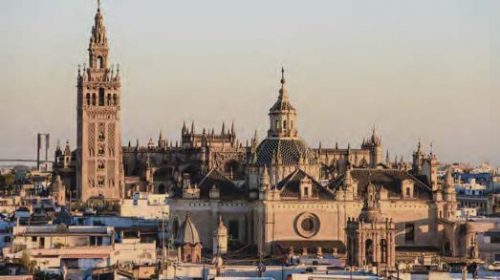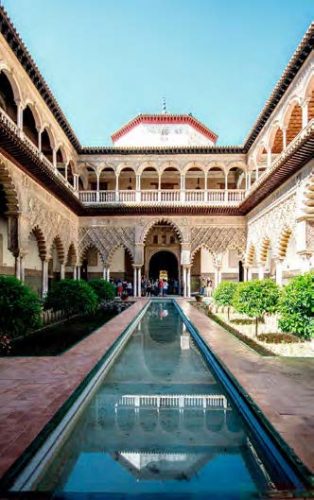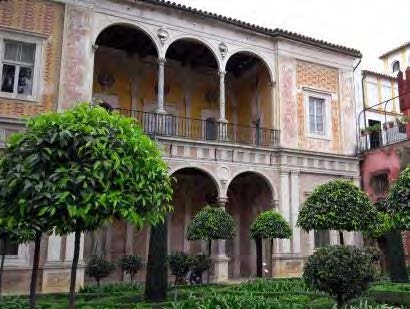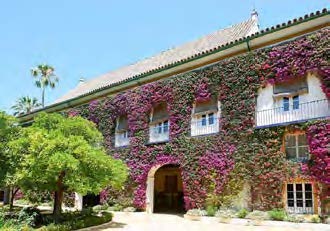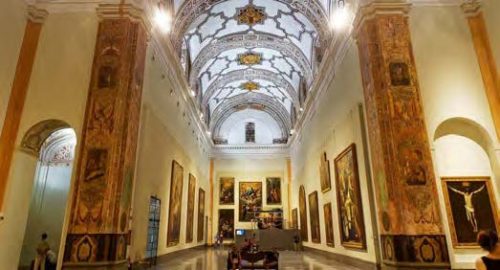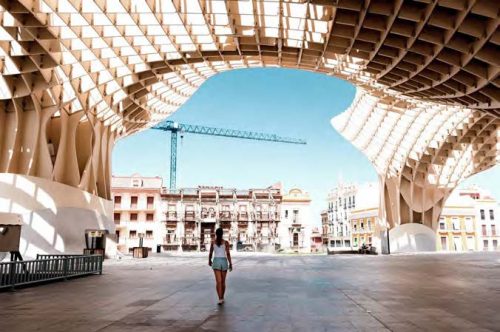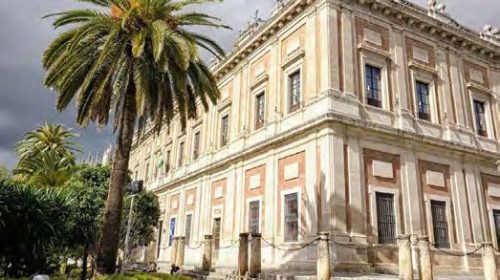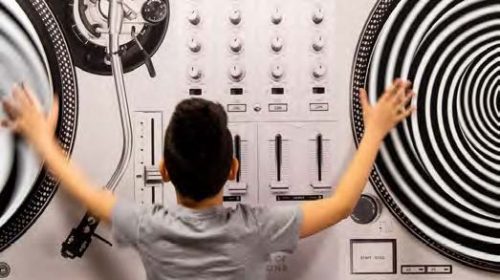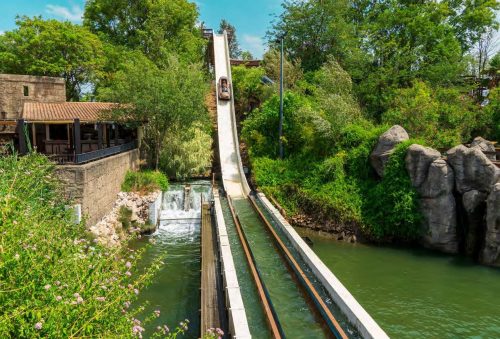What to see in Sevilla?
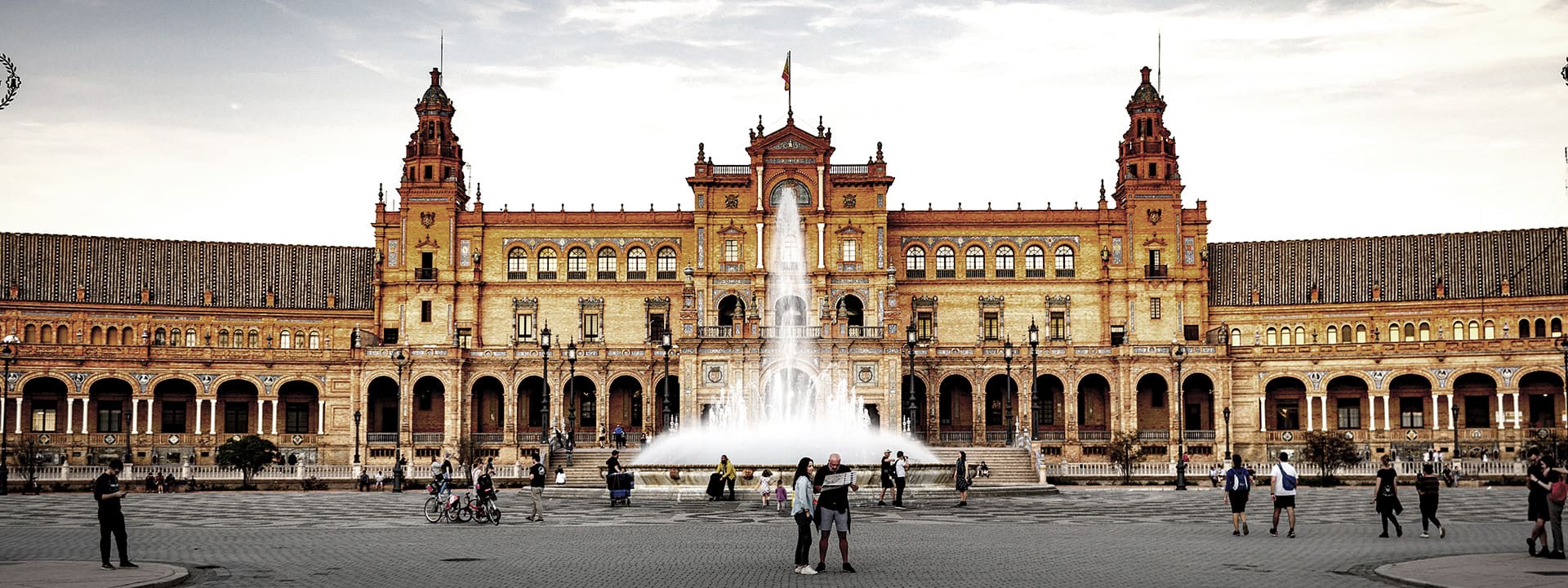
Discover the most beautiful places in Seville
Enclavada a orillas del río Guadalquivir, Sevilla es heredera de un rico legado árabe y de su condición de próspero puerto comercial con las Américas. La capital andaluza destila alegría y bullicio en cada una de las calles y plazas que configuran su casco histórico, con un interesante conjunto de construcciones declaradas Patrimonio de la Humanidad. Piérdete por sus calles y descubre los lugares más emblemáticos de Sevilla.
Destacado centro de negocios y servicios del sur peninsular, Sevilla dispone de infinitas posibilidades de ocio: museos, centros de arte, parques temáticos, cines, teatros, etc. Todo ello sin olvidar las numerosas terrazas, tascas y bares en los que poder practicar una de las costumbres más arraigadas y sabrosas de la ciudad: el “tapeo”.
Otra buena excusa para acercarse a la capital hispalense son sus fiestas. Declaradas de Interés Turístico Internacional, la Semana Santa y la Feria de Abril reflejan la devoción y el folclore del pueblo sevillano, siempre abierto y cordial con el visitante. Pero Sevilla es también un buen punto de partida para recorrer toda la provincia a través de las más diversas rutas culturales, como la Ruta Bética Romana o la de Washington Irving.
También se podrá descubrir la enorme riqueza natural con tesoros como el Parque Natural de Doñana, Patrimonio de la Humanidad y Reserva de la Biosfera por la UNESCO, o el Parque Natural de la Sierra Norte.
DISCOVER SEVILLE
1. Emblematic spaces in Seville
The Cathedral and the Giralda
Seville Cathedral is the largest Gothic Christian cathedral in the world. Declared a World Heritage Site. The Giralda has the classic structure of the Almohad minarets that would continue to be used for centuries in most Mudéjar bell towers.
It consists of a central prism with a square base, surrounded by the four outer walls. Between both structures are the ascent ramps, which, in the case of this tower and due to its large size, even allowed horse access.
How to acquire tickets?
- Through the official cathedral website..
- In the Church of El Salvador (just a 5-minute walk from the cathedral).
The Royal Alcazar
The Royal Alcazar of Seville will transport you through different eras, an experience you will not forget. You will undoubtedly get to know one of the most spectacular monumental complexes in the world. The Royal Alcazar has been chosen by different civilizations, cultures, and, through their dynasties, as a center of power: from the Almohads to the Christian kings who left their legacy here for history. A fantastic example is the marvelous Mudéjar Palace built by Pedro I.
- How to acquire tickets?Through the official Alcazar website.
La Plaza de España
Aníbal González played an essential role in the great Ibero-American Exhibition of 1929, designing pavilions and new urban spaces that the event brought to Seville. The most outstanding ones are:
Plaza de España: Probably the most spectacular space of regionalist architecture. It was inaugurated by King Alfonso XIII. Its surface is 50,000 m², of which 19,000 are built, and the remaining 31,000 are open space.
The Archaeological Museum: Former Fine Arts Pavilion of the Ibero-American Exhibition of 1929, built in neorenaissance style.
The Mudéjar Pavilion: In the Plaza de América of María Luisa Park, this neomudéjar building houses the Museum of Arts and Popular Customs of Seville.
The Royal Pavilion: It is the third of the buildings located in this magnificent square. It completes the homage to the architectural styles of the city with the neo-gothic.
Casa Pilatos
This palace was born in the last quarter of the 15th century as a result of the union of the Enríquez and Ribera lineages. Throughout the 16th century, due to the intense relationship that its most relevant members maintain with Italy, it undergoes profound transformations and assumes the role of a sieve through which the new forms and tastes of the Renaissance penetrate Seville. Romantic taste reforms, executed in the mid-19th century, complete its picturesque physiognomy, a harmonious synthesis of Gothic-Mudéjar, Renaissance, and Romanticism.
How to acquire tickets?
- Directly at the ducal house.
- By booking through our website www.hospes.com the Al-Andalus experience would include tickets to this monument. This experience also includes an Introduction to Classical Seville, a guided tour lasting 2 hours and 30 minutes that will allow us to discover the “Barrio de Santa Cruz” and the most emblematic places of this wonderful city.
Palacio de las Dueñas
Built between the 15th and 16th centuries, it takes its name from the disappeared Santa María de las Dueñas monastery, located in the adjoining plot and demolished in 1868. Its origin was the house-palace of the Pineda, lords of Casa Bermeja, who constituted one of the lineages of the Seville patriciate.
Later, the Palace was inherited by Don Fernando Enríquez de Ribera, II Marquis of Villanueva del Río, and father of Antonia Enríquez de Ribera, married in 1612 to Fernando Álvarez de Toledo, the future VI Duke of Alba. From this date, the palace belongs to the House of Alba.
In the 19th century, Dueñas was converted into a tenement house, its rooms compartmentalized with partitions and coffered ceilings covered with false ceilings. Curiously, one of the tenants and administrator of the Palace was Antonio Machado Álvarez, whose circumstance made possible the birth of one of the greatest Spanish poets, Antonio Machado, in 1875.
How to acquire tickets?
- Directly at the Palace ticket office.
- On the official website of the Palacio de las Dueñas
2.Other places of interest
Fine Arts Museum
The Seville art gallery boasts an enviable collection, with world-class works, within the framework of a building that contributes to the visitor’s experience, a former disentailed convent. It is an absolute reference of the Seville painting school, a genre that during the 17th century had no rival in the world and that also reached very special heights in the genre of costumbrismo in the late 19th and early 20th centuries.
The location is very comfortable for tourists, as it is located in the picturesque Museum Square, presided over by a statue of Murillo, a classic corner of Seville. We recommend visiting on Sunday mornings because an art market is set up in Museum Square.
The building is in Andalusian Mannerist style, one of the best examples. Juan de Oviedo y de la Bandera was the architect and sculptor who devised the construction project, promoted by Fray Alonso de Monroy.
Metrosol Parasol
The Setas de Sevilla, also known as the Metrosol Parasol project by architect Jürgen Mayer, constitutes the world’s largest wooden structure.
The monument contains five levels, and each level houses a space. The first level features the Antiquarium or Archaeological Museum, the Official Setas de Sevilla Store, a tourist information point for the city next to Past View, and access to the elevators; on the second level, you can access the market and the catering establishments; on the third, an elevated square for the enjoyment of the citizens; on the fourth level, the start of the walkways visit, as well as a small bar and a 500 m² event area. Finally, on the fifth level, you can enjoy the viewpoint at a height of 28.5 m.
Regarding the latter, at the Setas de Sevilla, you can enjoy a 360-degree panoramic viewpoint. In addition, the viewpoint has a 250 m walkway to see, look, and enjoy the views of the city from above.
Since its inauguration, the Setas de Sevilla viewpoint has become an important tourist attraction in the city of Seville and a must-visit for tourism.
La Maestranza Bullring
The origins of the Royal Maestranza must be placed in the conquest of Seville by King Ferdinand III the Saint, in the year 1248. The knights who accompanied him form a brotherhood or knightly brotherhood that is the germ of what we now know as the Royal Maestranza of Cavalry of Seville.
Since its creation, the Royal Maestranza organizes bullfights and festivities in the city, first in the main public squares of the city, and later in the bullring they build.
General Archive of the Indies
The General Archive of the Indies in Seville was created in 1785 at the request of King Charles III, with the aim of centralizing in one place the documentation regarding the administration of the Spanish colonies, until then scattered in various archives: Simancas, Cadiz, and Seville.
The archive preserves about 43,000 folders, with about 80 million pages and 8,000 maps and drawings that come mainly from the metropolitan bodies responsible for the administration of the colonies. It was declared a World Heritage Site by UNESCO in 1987, along with the Cathedral and the Royal Alcazars. Inside is the central courtyard, built in stone and of ample proportions, showing arches supported on pillars with half columns. The current main staircase of the building, designed by Lucas Cintora, stands out.
3. Family plans
Museum of Illusions
The Museum of Illusions in Seville is a space of both social and entertaining tours in a world of illusions that will delight all ages. It is a perfect space for new experiences and fun with friends and family. Not only do children love to come; parents, couples, and grandparents also do.
Enter the captivating world of illusions, a world that will make you doubt your senses and leave you fascinated; a world that will confuse you but also educate you. You will enjoy entertaining and fascinating tricks about vision, perception, the human brain, and science, which will help you understand why your eyes see things that your brain cannot understand. Are you ready for a great fascinating adventure?
Seville Aquarium
The Seville Aquarium is contextualized in Magellan’s journey. Through rivers and oceans, it narrates the history of the first circumnavigation of the world. Taking the port of Seville as a starting point, the Aquarium shows us what Magellan did not see: a journey through the marine depths.
You can admire more than 500 species from various ecosystems. The thematic areas are: Guadalquivir, Atlantic, Oceanarium, Tropical Jungle, Indo-Pacific, and other areas such as the African Savannah or the area dedicated to jellyfish.
Some of these fabulous creatures are the Bull Shark, which dominates majestically in the Oceanarium, the sturgeon that populated the waters of the Guadalquivir, the Mosaic Ray of the Atlantic, the Green Iguana of the Jungle, or the Pacific Lionfish.
During the visit to the Aquarium, be sure to cross the Oceanarium through its interior tunnel: an immersive experience that will allow you to see the species “from the inside.” It will leave the children amazed.
Isla Mágica
Isla Mágica has celebrated 25 years as one of the most important theme parks in Spain. Its theme based on the history of civilizations during the Discovery of America is full of attractions in its eight thematic areas. You can find the magical world of the Maya in the Quetzal area, the Door of America, the Pirates’ Lair and their mutinies, Seville and its Puerto de Indias, or El Dorado and its 4D virtual reality, and, of course, Magic Water, an oasis in the city. In short, Isla Mágica is the ideal place to alternate with a cultural visit to Seville.
Seville awaits you! From our hotel in the center of Seville, you can have a unique experience and visit the most emblematic monuments of the city. Stay in an authentic 18th-century communal courtyard at Hospes Las Casas del Rey de Baeza and enjoy the best local cuisine at the Azahar Restaurant. We will be delighted.
Soak up the scents of orange blossom and orange, and feel the energy of stone, mud, and slate in every corner of our accommodation. Seville does have a special color; do you dare to discover it with us?”
Categories: Uncategorized

